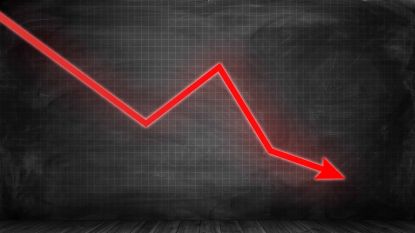Selling continued Thursday, with stocks spending the whole day in negative territory – though they did end well off their session lows. Today’s declines came as investors unpacked updates on the labor and housing markets, as well as the latest round of corporate earnings reports.
Diving right into those economic reports, the Labor Department this morning said weekly jobless claims (opens in new tab) fell by 15,000 last week to 190,000 – their lowest level since September. “U.S. stocks are declining after another labor market statistic shows that despite all the big-tech post-pandemic layoffs, the jobs market remains hot,” says Edward Moya, senior market strategist at currency data provider OANDA (opens in new tab). “The labor market needs to break to allow the Fed to comfortably keep rates on hold.”
Sign up for Kiplinger’s FREE Investing Weekly e-letter for stock, ETF and mutual fund recommendations, and other investing advice.
Subscribe to Kiplinger’s Personal Finance Be a smarter, better informed investor.
Save up to 74%
Sign up for Kiplinger’s Free E-Newsletters Profit and prosper with the best of expert advice on investing, taxes, retirement, personal finance and more – straight to your e-mail.
Profit and prosper with the best of expert advice – straight to your e-mail.
Meanwhile, data from the Commerce Department showed construction of new homes fell a seasonally adjusted 1.4% month-over-month in December to 1.38 million units, the fewest since June 2022. Year-over-year, housing starts were down 21.8%. Building permits also declined from November to December, falling 1.6% to 1.33 million.
“What just some weeks ago would have seen markets cheering the weaker data as it would have suggested correctly that the Fed’s aggressive rate hike campaign is doing its job in tamping down the demand side of the economy, is now being judged more harshly with bad news no longer enjoying a warm welcome by traders and investors alike,” says Quincy Krosby, chief global strategist at LPL Financial (opens in new tab).
As for earnings, Procter & Gamble (PG (opens in new tab), -2.2%) was a notable decliner on quarterly results. In its fiscal second quarter, the consumer staples giant said earnings fell 4.2% year-over-year to $1.59 per share. Revenue was down 1% to $20.8 billion, marking the first year-over-year decline in quarterly sales since June 2017.
It all added up to more losses for the major benchmarks. The Dow Jones Industrial Average gave back 0.8% to 33,044, the S&P 500 shed 0.8% to 3,898, and the Nasdaq Composite lost 1.0% to 10,852.
The Best Stocks to Ride Out a Volatile MarketToday’s jobs data shows that the debate remains open as to when we will see the labor market lose some of its resiliency amid the Federal Reserve’s efforts to cool inflation with ambitious interest-rate hikes, says Mike Loewengart, head of model portfolio construction at Morgan Stanley. “And when considering that the overall earnings picture continues to be a mixed bag, investors shouldn’t be surprised to see more volatility in the weeks ahead.”
This could lead to some short-term stomachaches for investors, but they would be wise to remember that investing is a marathon and not a sprint. In other words, stay focused on high-quality names that can ride out the storm. As we’ve mentioned in this space before, the best dividend stocks, like those found among the Dividend Kings, can offer investors peace of mind. There’s also our list of the best stocks to buy now, which are well-positioned to outlast the ups and downs of an uncertain market backdrop.
